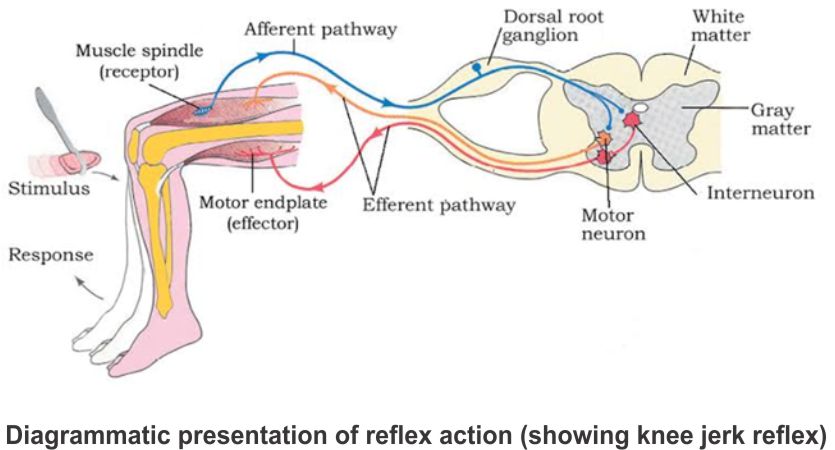PERIPHERAL NERVOUS SYSTEM IN HUMANS
- The peripheral nervous system (PNS) in humans serves as a vital communication network, connecting the central nervous system (CNS) to the rest of the body.
- Comprising nerves and ganglia outside the brain and spinal cord, the PNS plays a crucial role in transmitting sensory information to the CNS and relaying motor commands from the CNS to muscles and glands.
Components of the PNS:
- Nerves: Bundles of nerve fibers (axons) enclosed within connective tissue sheaths. These nerves carry sensory information from sensory receptors to the CNS (afferent nerves) and transmit motor commands from the CNS to muscles and glands (efferent nerves).
- Ganglia: Clusters of nerve cell bodies located outside the CNS. Ganglia serve as relay stations where sensory information is processed before being transmitted to the CNS.
Functions of the PNS:
- Sensory Function: The PNS detects and transmits sensory information from the external environment and internal organs to the CNS. This includes sensations such as touch, temperature, pain, and proprioception (awareness of body position).
- Motor Function: Motor nerves of the PNS transmit commands from the CNS to muscles and glands, initiating voluntary and involuntary movements and regulating physiological processes such as digestion, circulation, and respiration.
- Autonomic Function: The PNS controls involuntary bodily functions through the autonomic nervous system (ANS), which regulates processes such as heart rate, blood pressure, digestion, and respiratory rate. The ANS consists of sympathetic and parasympathetic divisions, which often have opposing effects to maintain homeostasis.
Reflex action and Reflex Arc
- A reflex action is an involuntary response to peripheral nervous stimulation, occurring without conscious effort or thought.
- It is triggered by stimuli such as extreme temperature, pain, or threatening situations, prompting a rapid reaction to protect the body from harm.
Components of a Reflex Arc:
- Afferent Neuron (Receptor): Receives signals from sensory organs (e.g., skin receptors) and transmits impulses towards the central nervous system (CNS), typically via a dorsal nerve root.
- Efferent Neuron (Effector or Excitor): Carries signals from the CNS to the effector organ (e.g., muscle or gland), initiating a response.
- Central Nervous System (CNS): Receives and processes sensory input, coordinating the appropriate motor response.
Mechanism of a Reflex Arc:
- When a stimulus activates a sensory receptor, such as touching a hot surface, sensory impulses are transmitted along the afferent neuron towards the CNS, usually at the level of the spinal cord.
- Within the CNS, the sensory input is quickly processed, and a motor response is generated.
- The efferent neuron carries signals from the CNS to the effector organ, initiating a rapid and coordinated response, such as withdrawing the hand from the hot surface to prevent injury.
- The entire process, from stimulus detection to response execution, forms a reflex arc, ensuring swift and automatic reactions to potential threats or harmful stimuli.
Importance of Reflex Arcs:
- Reflex arcs provide rapid and protective responses to potentially dangerous stimuli, minimizing the risk of injury or harm to the body.
- They allow for quick adjustments and adaptations to changing environmental conditions, enhancing survival and well-being.
